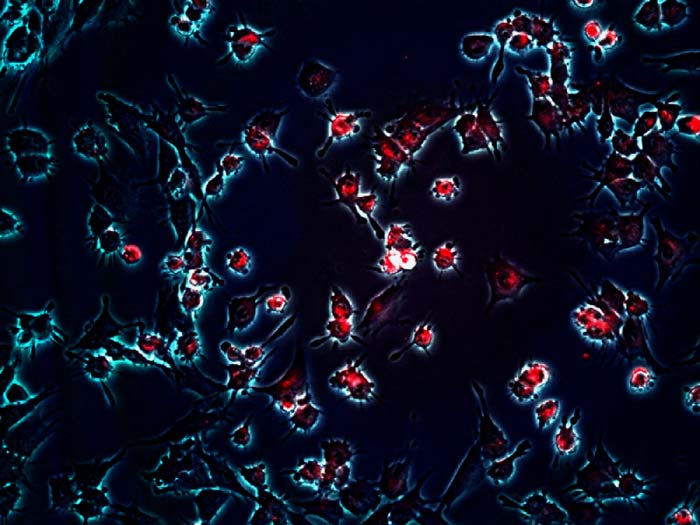Research in my laboratory focuses on the development of nanoparticle technologies and their application in nanomedicine, molecular imaging, and molecular diagnostics. Specific areas of research interest includes: 1. Development of novel multifunctional nanoagents for diagnostics and treatment of cancer and atherosclerosis. 2. Development of activatable nanoparticles with applications to optical imaging and photodynamic therapy. 3. Development of sensitive and high throughput pathogen and toxin detection using magnetic nanoparticles and NMR/MRI detection. 4. Use of combinatorial libraries to develop novel targeted nanoparticles. 5. Design of new diagnostic methods for telomerase activity and telomere length and other cancer related targets.

Novel Magnetic Nanosensors – Superparamagnetic iron oxide nanoparticles has been used as molecular imaging agents in magnetic resonance imaging (MRI). In solution, these nanoparticles are known to alter the relaxation times (NMR signal) of neighboring water protons. This effect can also be used to design sensing technologies that utilize water relaxation as detection method. We will design novel magnetic nanoparticles with enhanced water relaxation upon target recognition. Improvements in the detection limit of this technique will allow its use in molecular diagnostics applications.

Multifunctional Nanoagents for Imaging and Therapeutic Applications – A current challenge in nanomedicine is being able to design traceable therapeutic nanoparticles that would allow to monitor their localization on specific cellular target in vivo. Our group plan is to design nanoparticle conjugates that become activated (light up) upon reaching a particular cellular target. Our goal is to design targetable polymeric nanoparticles containing chromophores for dual multi-photon imaging and photodynamic therapy treatment of cancer.

Development of diagnostic methods for telomerase activity, telomere length and other cancer related DNA-targeting enzymes – Alteration in the activity of some DNA targeting enzymes (e.j. telomerase, topoisomerase) is believed to be one of the factors responsible for the transformation of cells into aggressive cancerous cells. For this reason, we are interested in designing magnetic nanoparticles platforms that would allow for the rapid and sensitive screening of these enzymes is tissue samples and to screen for inhibitors of these enzymes as potential cancer therapeutics.
Use of combinatorial libraries to develop novel targeted nanoparticles – A current areas of interest is the use of combinatorial libraries of peptides, oligos, and small molecules, among others to create combinatorial libraries of nanoparticle conjugates that will be screen to identify hits for molecular targets of interest.

The fact that the water relaxation time (NMR signal) of a suspension of magnetic nanoparticle conjugates changes when these nanoparticles bind to a target in solution is a revolutionary observation. This effect, which is detectable by NMR and MRI techniques, has been used to detect various targets such as mRNA, proteins, viruses, enzymatic activity and small molecules in solution. For example, magnetic viral nanosensors can be designed to specifically detect a particular virus in solution. This idea can be expanded to detect by NMR various other pathogens, toxins and markers of disease.
For More Information
Dr. J. Manuel Perez
Department of Chemistry, CH 117
University of Central Florida
Orlando, FL 32816